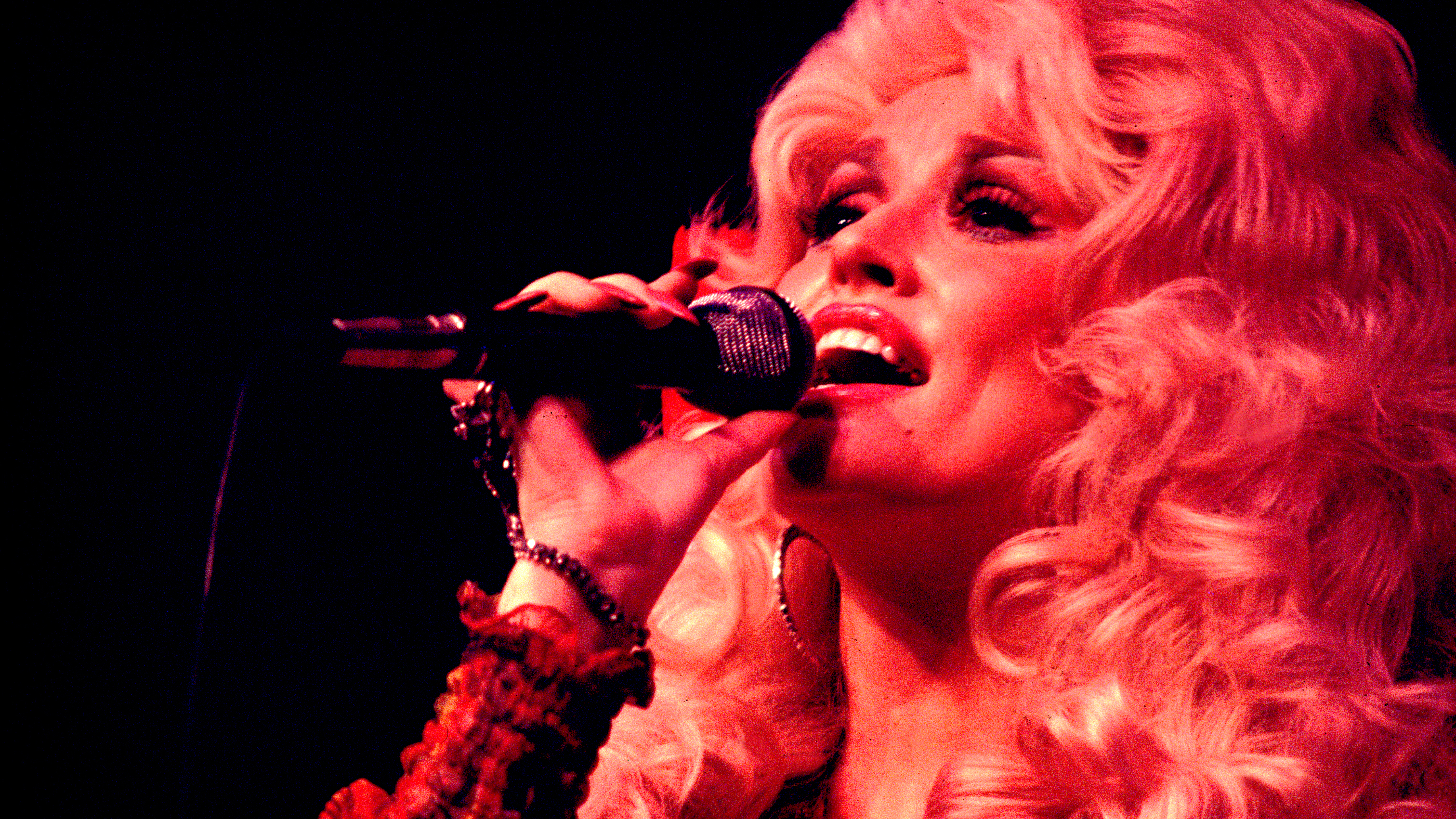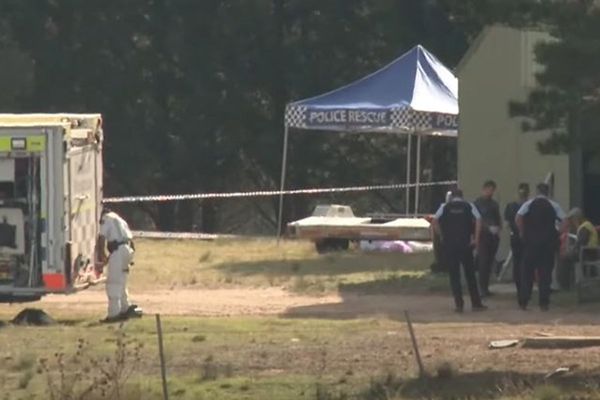
It has been hailed by critics as one of the most expressive songs in the country genre and has been recorded by artists such as The White Stripes, Beyoncé, Miley Cyrus and Olivia Newton-John.
It is also the song that launched its writer Dolly Parton into the mainstream pop market and became her first big crossover hit, encapsulating in two minutes and forty one seconds her straight-talking Tennessean roots with a storyline and hook that would resonate with millions across the globe.
Jolene was the song that made Dolly Parton, transforming her into a household name. It’s also a song that she regards as one of her crowning achievements.
“The one that’s most recorded is Jolene, that seems to be the favourite,” said Parton in a Q&A with The Guardian on 31 October 2024. “Do you know that song has been recorded, somebody told me, 450 times in the last 52 years? I’m so proud of it."
The whole story of how Dolly Parton rose from a dirt-poor background in the Tennessee hills to become a global superstar has become the stuff of legend.
The fourth of 12 children, she was born on 19 January 1946 to sharecropping parents in a one-room cabin on the banks of the Little Pigeon river in East Tennessee.
When Parton was a young child, the family moved to a farm in the Smoky Mountains. Parton attributes her musical abilities to the influence of her mother Avie Lee Carlin (née Owens), who entertained her children with ancient ballads from her Welsh immigrant ancestors, brought to southern Appalachia in the 18th and 19th centuries.
At seven, Parton started playing a homemade guitar. One year later, her uncle, Bill Owens, bought her a proper instrument, and by the age of ten she was appearing on The Cas Walker Show on WIVK Radio in Knoxville Tennessee.
At the age of 13, she appeared on the Grand Ole Opry, where she met Johnny Cash for the first time.
The day after she graduated from Sevier County HIgh School in 1964, Parton moved to Nashville. She landed a publishing deal and co-wrote several singles with her uncle, including two Top 10 hits for Bill Philips and Fuel To The Flame (1967), a No. 11 hit for Skeeter Davis.
In 1967, she released her debut album Hello I’m Dolly and was invited by country music entertainer Porter Wagoner to join his weekly TV variety show The Porter Wagoner Show. It launched her career. Her natural onscreen persona suited the show’s informal feel.
While singles such as Just Because I’m A Woman were only moderate hits, her recording of the Jimmie Rogers’ song Muleskinner Blues in 1970 yielded a No. 3 hit in the Country Chart, followed by a No. 1 hit with Joshua the following year.
Her signature song Coat Of Many Colours reached No. 3 and heralded a series of hits.
By the end of 1974, Parton had parted from Wagoner, formed her own band and launched her solo career. But not before she had written and recorded the song that would become her biggest hit. That song was Jolene and it was immediately clear she had created something special.
In a 2008 interview with Washington DC-based public broadcasting organisation, NPR, Parton said she first got the idea for a song called Jolene back in the late ’60s while signing autographs after one of the Porter Wagoner live shows.
"One night, I was on stage, and there was this beautiful little girl – she was probably eight years old at the time," Parton says. "And she had this beautiful red hair, this beautiful skin, these beautiful green eyes, and she was looking up at me for an autograph. I said, 'Well, you're the prettiest little thing I ever saw. So what is your name?' And she said, 'Jolene.' And I said, 'Jolene. Jolene. Jolene. Jolene'. I said, 'That is pretty. That sounds like a song. I'm going to write a song about that’."
This touching encounter would take on a more adult tone when Parton sat down to write the song in 1973. According to Parton, the song was ultimately inspired by a red-headed bank clerk who flirted with her husband, Carl Dean, at his local bank branch around the time they were newly married in 1966.
Six decades on, Parton and Dean are still married and it’s hard to recall a celebrity spouse who has so successfully maintained their privacy. “I’ve never seen Carl Dean, nor never met him,” recalls session musician Lloyd Green in the BBC documentary Dolly Parton: Here I Am. “I know he exists [but] I don’t know anyone who’s ever seen Carl Dean.”
One person who clearly did see Carl Dean was the red-headed bank teller who became immortalised as Jolene.
“She got this terrible crush on my husband,” Parton told NPR. "And he just loved going to the bank because she paid him so much attention. It was kinda like a running joke between us – when I was saying, ‘Hell, you're spending a lot of time at the bank. I don't believe we've got that kind of money!’ So it's really an innocent song all around, but sounds like a dreadful one.”
It’s also a story that Parton has recounted thousands of times from the stage when introducing the song. “She was trying to take care of my husband while I was out on the road,” says Parton in a live clip in the BBC documentary. “Well that didn’t go over too big with me. I fought that red-headed woman like a wildcat. She took my wig off and almost beat me to death with it! But I kept my husband.”
Simplicity is key to the song’s appeal. “It’s just the same word over and over,” Parton told NPR. “Even a first-grader or a baby can sing, 'Jolene, Jolene, Jolene, Jolene'. It's like, how hard can that be?"
The lyrics of Jolene are essentially an exchange between two women and as author and musicologist Lydia Hamessley points out in the BBC documentary, the man is noticeably absent throughout. “In Jolene, Dolly is singing a song about a cheating man. But she doesn’t address the man at all. In fact, he seems not to be relevant to the story. She’s really engaging with this other woman. It may seem that she doesn’t have very much power in that dynamic but in fact she’s the one who speaks all the lines.”
Parton has said that Jolene is a song that “fits a lot of people”, because it is fuelled by our insecurities. “We all are insecure,” says Parton in the BBC documentary. “There’s always someone that could take that person from you and you’re vulnerable.”
The song is instantly evocative. “I can see Jolene walking down the street,” says Kylie Minogue in the BBC documentary Dolly Parton: Here I Am. “I can see Dolly bristling. It’s a real art of storytelling. How to say a lot and paint a picture in a three minute song.”
Jolene was recorded in RCA Studio B in Nashville, in October 1973. Written and recorded in the key of C#min, with a capo on the fourth and the chord shapes of Am-C-G-Am-G-Am, it skips along at a pacey 111bpm. “It’s a great chord progression,” Parton told NPR.
What first draws the listener in though the song’s infectious guitar lick.
“The thing I remember most was all the musicians when I came up with the little guitar lick, the Jolene lick, saying: “Damn, that’s so good. That’s the coolest little lick’,” Parton told The Guardian. “I was playing guitar pretty seriously back then, before I had all the long nails. I remember all the guys learning to play it and everybody thinking how cool a rhythm it was. It was a little out of the norm for the things we’d been doing up to that time. I remember everybody in the studio just loving that song.”
The lick is a one measure, four-beat riff played in the Am shape, which is repeated throughout the track and gives the song a real skip and groove. This lick was played in the studio by the late Nashville session guitarist chip Young, a revered player renowned for his thumb-style, or Travis-picking style.
The other Nashville session guitarist who played on Jolene was Wayne Moss, handling the steel-string part that complements Young’s primary riff, which Young played on a gut-string classical guitar.
"It's a great chord progression, people love that 'Jolene' lick," Parton told NPR in 2008. “It's as much a part of the song… as the song [itself].”
Jolene was released on 22 May 1973 and reached No. 1 on Billboard’s Country Chart, peaking at No. 60 on the Billboard Hot 100. In 2024, in Rolling Stone’s poll of 200 Greatest Country Songs of All Time, Jolene was placed at No. 1.
Parton has re-recorded and re-released the track a number of times, as in 1995, when it appeared on her thirty-third album Something Special.
In 2000, The White Stripes released the first of a number of covers of the song, raw and visceral renditions that elevate the core sentiment of the song to one of yearning desperation.
On 29 March 2024, Beyoncé released her version of Jolene. “With similar instrumentation but fresh lyrics, Beyoncé has taken the age-old concept and breathed new life into it,” wrote Lauren Boisvert in American Songwriter magazine. “Beyoncé employs a smoother guitar sound backed by a pulsing beat to tie the song into her pop/R&B roots.”
Such covers are a testament to the enduring power of the song and yet Parton’s original 1973 recording still resonates across the decades, thanks largely to her effortlessly heartfelt delivery and simple restraint.
“Staying true to her intentions, Parton fortunately chooses not to decorate the song with vocal harmonies, additional instruments and pop hooks,” wrote Barry Webber of AllMusic in a retrospective review. “The song is stripped down to guitar and Parton's vocals. The melody itself is immensely catchy, and the lyrics are simple enough to avoid melodrama in favour of raw, blunt emotion.
“Jolene… continues to stand as not only one of her best songs, but one of the great country ballads of the 20th Century.”







